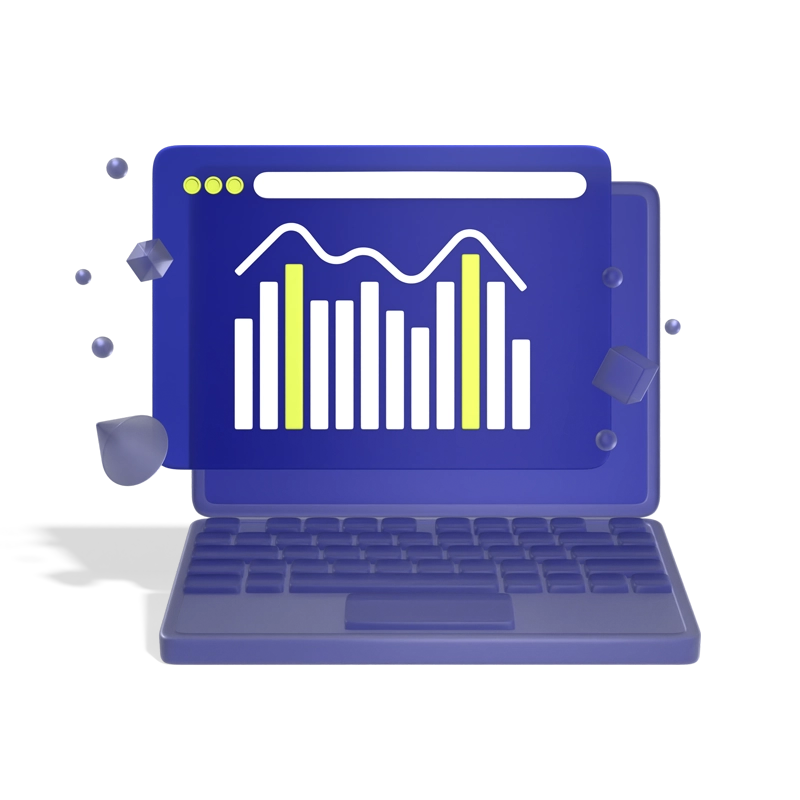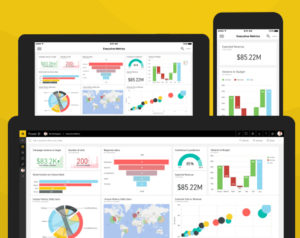

Table of Content
When Data Meets Design: The Hidden Power of Visualization Tools
1. Excel – The First Stop on Everyone’s Journey
2. Power BI – Excel’s Smart Sibling That Grew Up in Tech
3. Google Charts – Light, Free, and Surprisingly Capable
4. Tableau – The One Everyone Talks About for a Reason
5. Zoho Analytics – Quietly Powerful, Overtly Underrated
Zoho Analytics flies under the radar in terms of its capabilities. It does a lot with its dashboards, data blending, sharing, analytics, etc. It connects to major sources and even offers AI-powered insights, which actually aren’t too bad. It’s positioned for business, but not as widely used as Power BI or Tableau, so you may need to train your team on its use. Still, it deserves more attention than it gets. Especially if you already use other Zoho products.
6. Databox – Dashboards on Autopilot
7. Infogram – Pretty Charts for People with No Time
8. Datawrapper – The Journalist’s Best Friend
9. D3.js – The Deep End (Code Heavy)
10. Plotly – Code-Friendly but Not Intimidating
11. Qlik Sense – The Curious Explorer
12. Looker – The Data Perfectionist
13. Grafana – The Real Time Watchdog
So, Which One Should You Use?
- Want speed and familiarity? Excel or Power BI.
- Need interactive dashboards for teams? Tableau or Zoho Analytics.
- Sharing metrics across tools? Databox.
- Building quick, good-looking charts? Infogram or Datawrapper.
- Coding custom visualizations? D3 or Plotly.
- Working in the browser with live data? Google Charts.
Each of these tools is good at something. None of them are good at everything. The trick is knowing what you need before you open the toolbox.
Final Words: Tools Don’t Make the Visual, You Do
Here’s the truth. A beautiful chart that says nothing is still useless. A simple bar graph that reveals a powerful insight? That’s what you need. The tool doesn’t tell the story. You do.
Don’t get caught up in features or obsessed with clarity. Pick a tool that feels right for how your brain works and how your audience thinks. If your visual makes someone say, “Now I see,” then you’ve done your job.
Call-To-Action
Ready to transform your data into powerful insights? At Korcomptenz, we connect you with top-tier talent and solutions tailored to your data visualization needs. Whether you’re seeking expert consultants, developers, or analysts skilled in tools like Tableau, Power BI, or D3.js, we’ve got you covered.
Get in touch with Korcomptenz today and start turning your data into decisions that drive real business impact. Let’s make your data story unforgettable.

FAQ’s About SAP GRC
What’s the best data visualization tool for beginners?
MS Excel is the most easiest tool for beginners. Most already know how to use it, and it lets you create basic charts with minimal fuss. What is data visualization becomes an obvious question at this stage, as tools like Excel introduce the basics through simple graphs and charts. But if you want something more intuitive and modern, Tableau Public is a good leap forward. It’s free, visual, and doesn’t require coding. You won’t build groundbreaking dashboards on day one, but you’ll start thinking in charts instead of rows.
Do I need to know how to code to use these tools?
Not at all. Most tools are drag-and-drop friendly. Tableau, Power BI, and Zoho Analytics don’t expect any programming knowledge. Along the way, you’ll start to understand different types of Data Visualization, like bar charts, heat maps, and scatter plots, and when to use them. But if you do know how to code, tools like D3.js or Plotly will unlock another level of customization and interactivity. The truth is, coding gives you flexibility, but it also makes everything slower. Choose based on what you’re trying to build, not what looks impressive.
What’s the difference between a dashboard and a chart?
A chart answers one question. A dashboard tries to answer several at once. Sometimes too many. Charts are surgical. Dashboards are strategic. The danger with dashboards is overloading them until nothing stands out. Good tools like Power BI, Databox, or Tableau help with layout and filtering, but the thinking still has to come from you.
Which tool should I use if I want to embed visuals on a website?
If your goal is to create visuals that live online, look at Google Charts, Datawrapper, or Infogram. They’re made for web publishing and offer easy embedding. If you’re more technical, Plotly.js and D3.js give you total control, but they’ll also cost you time. Use simple tools unless you need complex interactivity or custom design. For most people, less is more.
Are free tools good enough for professional work?
They can be. Datawrapper, Google Charts, and Tableau Public all have free versions that are more than capable for clean, professional visuals. The limitations usually come in when you need to connect to live data, export in high-res formats, or lock down branding—features often included in full data visualization services. If you’re freelancing, building a portfolio, or experimenting, free tools will do just fine. But for teams and ongoing reporting, the paid tiers are worth it.
Share this article
Use AI to summarize this article




